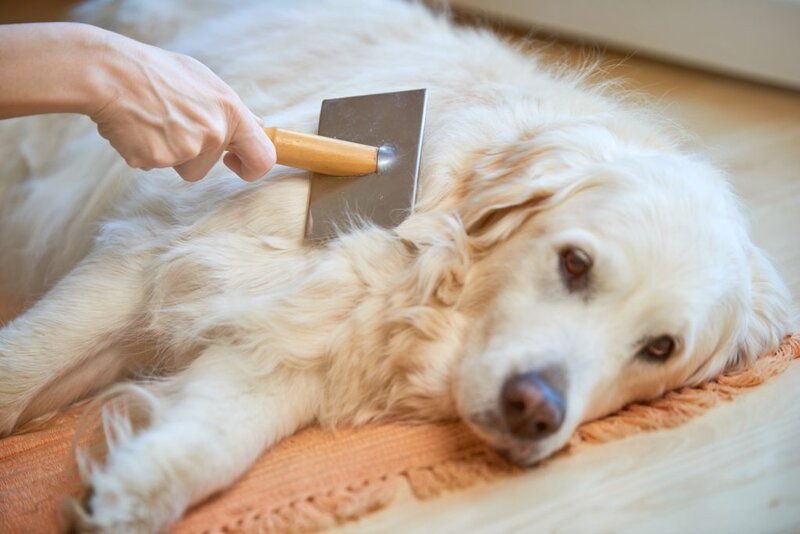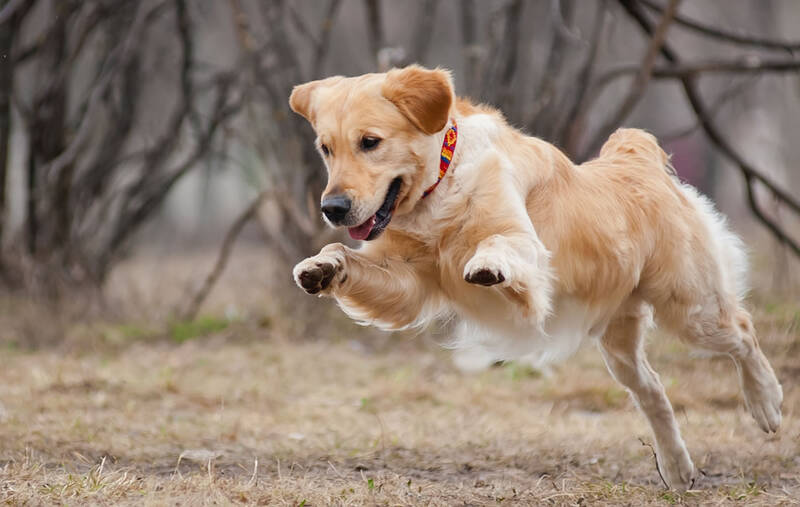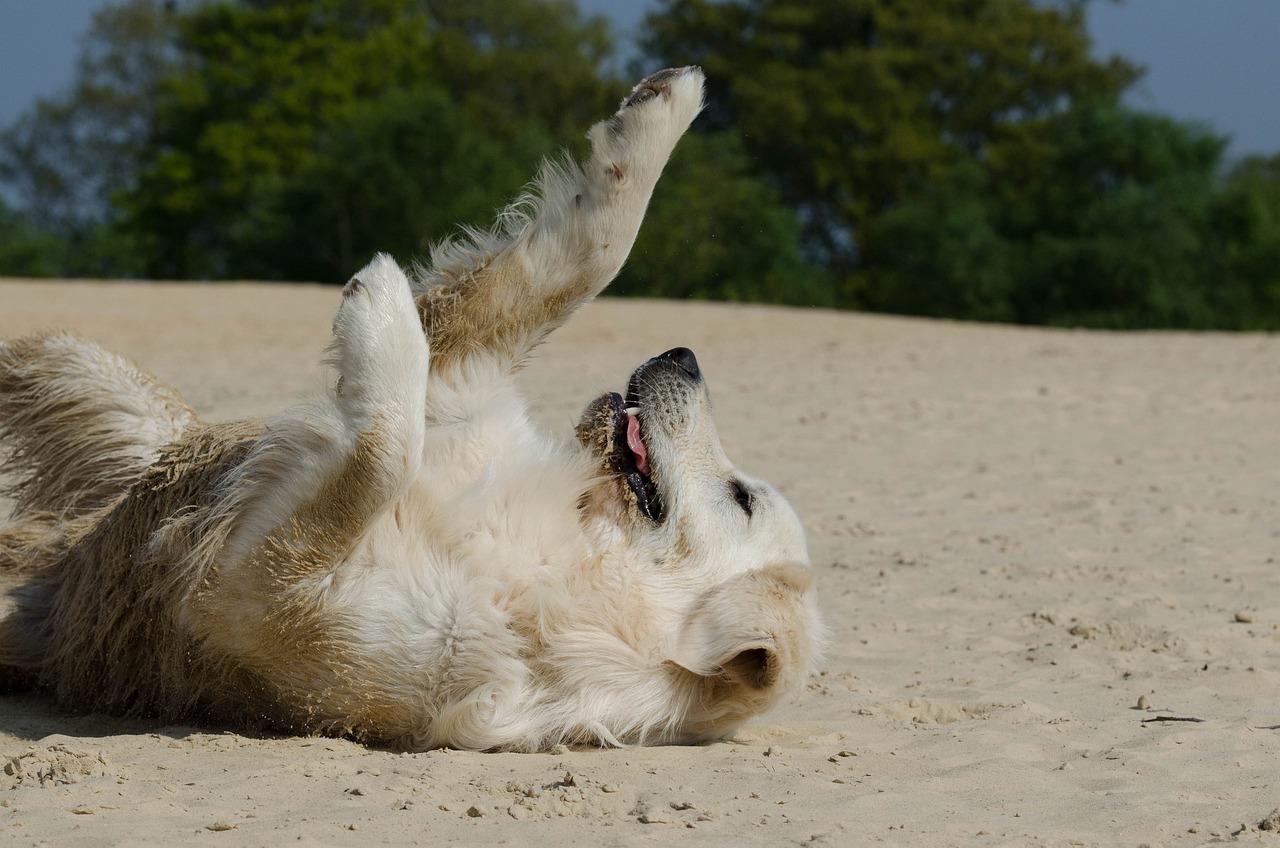Bringing a Golden Retriever into your life means welcoming a bundle of energy, intelligence, and unconditional love. While these beloved dogs are known for their friendly nature and quick learning abilities, a wise training approach is essential to help them become well-mannered family members.
This comprehensive guide will walk you through everything you need to know about training Golden Retriever effectively.
Understanding Your Golden Retriever’s Personality

Before we discuss training techniques, it’s essential to understand your fur baby’s personality first. Let me tell you how lucky you are: Golden Retrievers are one of the easiest breeds to train. They are social, smart, always excited, and most importantly, they love their owners. Interacting with you and pleasing you are often their top priorities, so with the right approach, success is almost always guaranteed.
Alright, skeptics might stop me here and ask, “why ‘almost’?” As friendly, fun-loving, and intelligent as they are, two edges in Golden Retrievers’ personalities might pose challenges in the training process. This is something breeders, dog trainers, and other training guides on the internet wouldn’t tell you:
- Goldies can be surprisingly stubborn: Don’t be fooled by their loving demeanor – Golden Retrievers have a stubborn side that surprises many pet parents. They can be so good at sinking their feet in and refusing to move an inch if they want to do something else, such as investigating a smell or going on a walk. Here’s the first rule of thumb for training Golden Retrievers: Get them to work WITH you, not against you, and encourage them with treats to boost their motivation.
- Goldies love everyone: While most Golden Retrievers are devoted to their owners, some just love everyone. That means it will be a pain to manage their excitement whenever they see a new face or a new animal. For this reason, we make self-control commands like “sit,” “come,” and “stay” part of our basic lessons.
Training Golden Retriever: Essential Tips
Based on the breed’s specific personality, our experts provide a list of training tips specifically crafted for Golden Retrievers:
- Proper Training Equipment: Get a sturdy 6-foot leash, flat collar, treat pouch, and clicker. These basic tools ensure you’re prepared for any training scenario and help maintain consistency in your training sessions.
- High-Value Treats: Stock up on small, soft treats or toys for Golden Retrievers specifically for training. Use special treats like small pieces of chicken or cheese for challenging tasks, saving regular kibble for easier exercises.
- Training Schedule: Set aside 10-15 minute sessions, 2-3 times daily. Short, frequent sessions are more effective than long, infrequent ones, as Golden Retrievers can lose focus when tired.
- Training Area Setup: Create a distraction-free training space indoors before moving to more challenging environments. Remove toys and other items that might grab your dog’s attention during training sessions. If possible, you will want to train your Goldie at home to avoid the distraction of other people and animals.
- Exercise Requirements: Ensure 30-60 minutes of exercise before training sessions. A tired Golden Retriever is more focused and receptive to learning, making your training time more productive.
- Reward Timing: Keep treats easily accessible and reward within 1-2 seconds of desired behavior. Proper timing is crucial for your dog to associate the reward with the correct action.
Basic Lessons for Starters
House Training

House training should be your first priority with a new puppy. Take your Golden Retriever out first thing in the morning, after meals, after naps, and before bedtime. Choose a specific spot outside and use a consistent command like “go potty.” When they eliminate outside, praise them immediately. Accidents will happen, but never punish your puppy – simply clean thoroughly and maintain vigilance.
Crate Training
A crate provides your Golden Retriever with a safe space and aids in house training. Introduce the crate gradually by placing treats and toys inside. Feed meals near the crate, eventually moving the bowl inside. Start with short periods while you’re home, then gradually increase duration. Make the crate comfortable with appropriate bedding and never use it as punishment.
Teaching “Sit”
The “sit” command forms the foundation for many other commands. Begin by holding a treat near your puppy’s nose, then slowly move it up and back over their head. As their head tilts back to follow the treat, their bottom will naturally lower to the ground. The moment they sit, mark the behavior with a “yes” or clicker, then reward. Once they’re consistently following the hand motion, add the verbal “sit” command.
Walking on Leash
Leash training requires patience but is essential for enjoyable walks. Start indoors where there are fewer distractions. Let your puppy wear their collar and leash around the house to get comfortable. When training, reward them for walking beside you. Stop immediately if they pull, only moving forward when the leash is loose. Gradually increase the challenge by moving to your yard, then quiet streets.
Teaching “Come”
A reliable recall is crucial for safety. Begin in a quiet, enclosed area. Call your Golden Retriever’s name followed by “come” in an excited, encouraging voice. When they start moving toward you, continue encouraging them. Reward generously when they reach you. Never punish them for coming to you, even if they’ve done something wrong – you want them to always associate coming to you with positive experiences.
Teaching “Stay”
Start teaching “stay” once your dog masters “sit.” Have them sit, then hold your palm out like a stop signal while saying “stay.” Wait just a second, then reward while they’re still in position. Gradually increase the duration, starting with a few seconds. Once they understand duration, begin adding distance one step at a time. Always return to your dog to provide the reward rather than calling them to you.
Teaching “Leave It”
This command can prevent your Golden Retriever from picking up dangerous items. Place a low-value treat on the floor and cover it with your foot. When your dog stops trying to get it, mark the behavior and reward them with a higher-value treat from your hand. Gradually make it more challenging by uncovering the treat and increasing the time they must ignore it.
Common Problems & How to Solve

Jumping on People
Golden Retrievers often jump up to greet people out of excitement. To correct this, completely ignore your dog when they jump, turning your back if needed. Wait for all four paws to touch the ground, then calmly greet and praise them. Teach an alternative greeting, such as sitting to be petted. Practice consistently with family members and visitors.
Mouthing and Nipping
Mouthiness is common in Golden Retriever puppies but needs to be addressed early. Provide appropriate chew toys for natural mouthing needs. When teeth touch skin, give a sharp “ouch” and stop playing briefly. If the behavior continues, end the play session completely. Consistently reward gentle play and appropriate toy use.
Pulling on Leash
Many Golden Retrievers get excited on walks and pull ahead. Use the “stop and go” method: stop walking immediately when they pull, wait for them to create slack in the leash, then proceed. Reward them frequently for walking beside you. Consider using a front-clip harness for better control during training.
Read more >> How Much Exercise Does a Golden Retriever Need?
Conclusion
Training a Golden Retriever requires patience, consistency, and understanding of their unique traits. Focus on positive reinforcement and maintain clear boundaries. Remember that every dog learns at their own pace – celebrate small victories and keep training sessions fun and engaging. With dedication and the right approach, your Golden Retriever will develop into a well-mannered, joyful companion who brings happiness to everyone they meet.

With years of expertise as a pet care writer, I’ve acquired a specific interest in Golden Retrievers, who are one of the most popular and beloved dog breeds. Although I do not own a Golden Retriever, my extensive study and talks with pet professionals enable me to offer useful and reliable articles for dog owners. My work on this website covers important areas such as diet, grooming, and training for Golden Retrievers. My goal is to provide readers with the information they need to keep their dogs healthy and happy.


